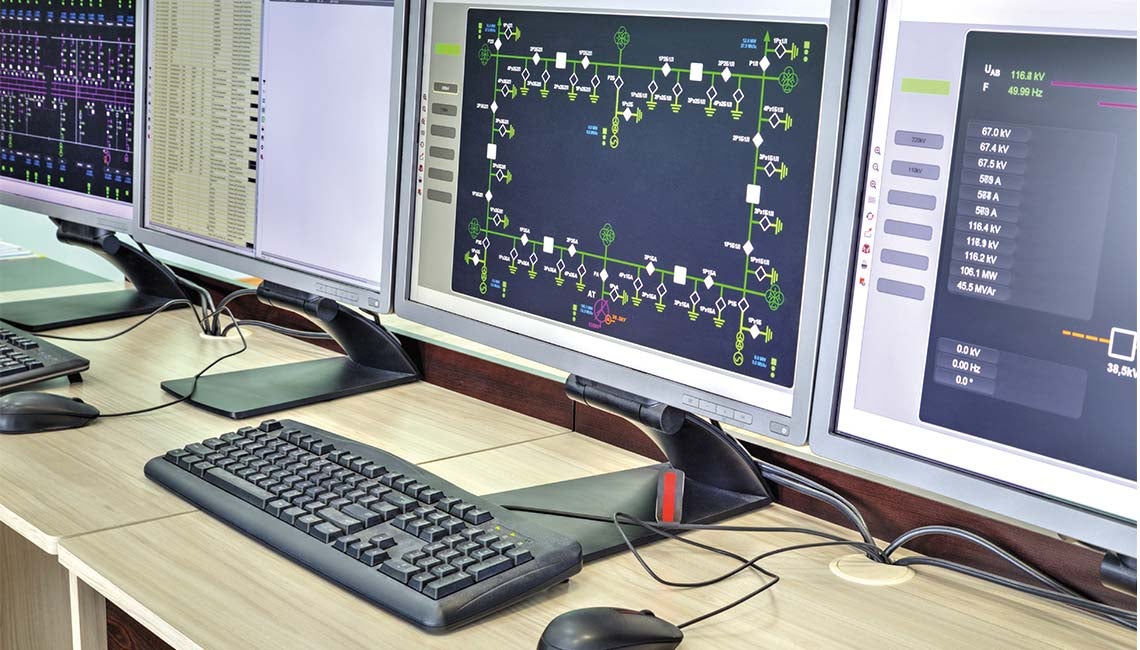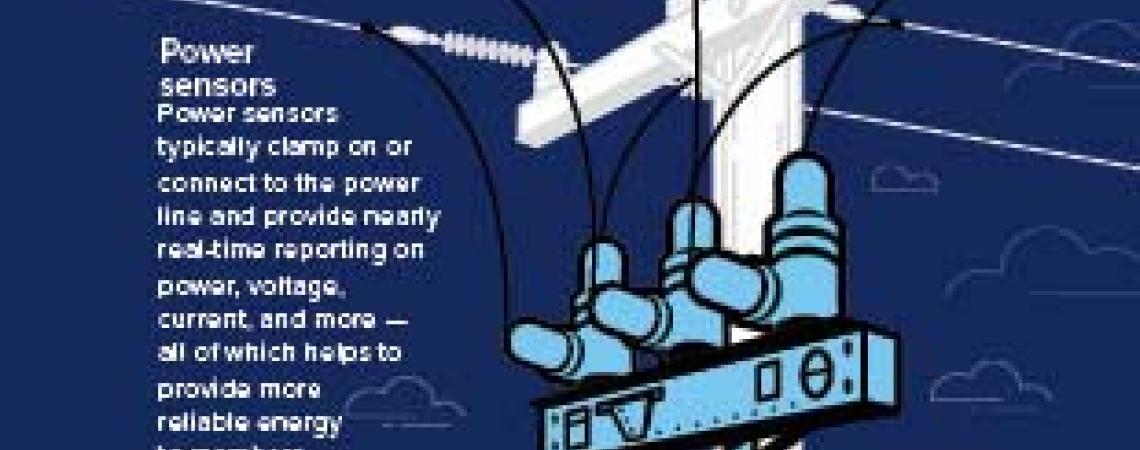In the middle of one night this past July, Pioneer Electric Cooperative experienced an outage affecting 1,041 members.
In the past, the co-op would have had to rely on members calling in a report to be able to triangulate the fault that caused the outage closely enough to send out a crew to find and fix it. Those members likely would have been without power for hours in a severe test of the system’s reliability.
But in this case, the co-op’s on-call engineer received a text message notification at 12:39 a.m., seconds after power was interrupted. The engineer immediately drove to the office in Piqua, evaluated the outage based on data received from the co-op’s supervisory control and data acquisition (SCADA) system, and confirmed the status.
After communicating with the rest of the restoration team to make a plan, the engineer was able to reroute the power supply by remotely opening and closing a series of switches. In this instance, the co-op didn’t even have to dispatch a line crew.
By 1:20 a.m., 41 minutes after the outage began, power was restored to all members.
Midwest Electric members Ben and Sandy Borger say they appreciate the co-op's app, which lets them do thing such as check their electric bill, even when they're on vacation.
Leading the way
Electric cooperatives are not strangers to overcoming challenges. Co-ops were born because bringing power to rural America was (and remains) a difficult task that for-profit utilities wanted no part of.
That explains why, from their beginnings, electric cooperatives have been at the forefront of developing, adopting, and using cutting-edge technology — not because it’s fun and fancy, but because it’s a necessity.
On a large scale, co-ops use the latest technology to monitor and maintain entire systems. Closer to home, co-op-developed technology has simplified tasks as mundane as reading a meter or finding the location of an outage. In a big city, that might take a few minutes for a utility crew, but co-op crews might have to drive for a couple of hours, often over vast and/or challenging terrain, to do the same thing. If technology can save that two-hour trip in a truck, it’s safer for employees, minimizes outage times, and saves members money.
Technology for growth
Pioneer Electric was among the first electric utilities in the country to implement a SCADA-type system.
When the co-op saw large industrial growth in its service area in the 1980s, engineers needed a way to monitor and quickly and efficiently fix any substation and power-line issues that could damage the sensitive, sophisticated equipment now running on co-op electricity. So they developed and put into use a system that both
co-ops and even larger electric utilities around the country have since adopted.
Those SCADA systems can automatically and constantly report distribution line conditions, including voltage and amperage, among other things, so the co-op can see the real-time status of substations and other equipment.
SCADA even allows the co-op to reroute electricity when an outage occurs. “We have visibility between substations, which allows us to perform remote switching in outage situations,” says David Elliott, Pioneer Electric’s operational technology manager.
The system knows
The data from SCADA systems has allowed the addition of an automated outage management system that not only detects outages but can even predict their extent. In the mid-2000s, Pioneer added automated metering infrastructure (AMI) technology, which allows the cooperative to pinpoint an outage at an individual member’s meter even before the member has time to call the co-op. It had another advantage as well. “AMI allowed us to reliably read meters without having to dispatch a meter reader,” Elliott says.
The SCADA technology has increased the reliability of the entire electric distribution system and also has significantly cut response times for outages. Co-ops are able to gather data from the system and assist line crews in finding the fault that caused the outage. Coupled with other technologies, it gives the co-op a detailed view of how the system is performing at any given moment.
A new way to serve
The meter-reading systems have allowed cooperatives to put some of that technology into the members’ hands. Many co-ops have introduced apps, such as SmartHub or the South Central app, that members may use to monitor real-time energy use, pay bills, report outages, or submit service orders right from their phones.
“We use SmartHub primarily for bill payment and have found the autopay function a time-saver when it comes to paying monthly bills,” says Sandy Borger, a member of St. Marys-based Midwest Electric. “We appreciate knowing that if our monthly bill looks a little off, we have the capability to log in to our account and find the issue without having to call into the co-op office.”
In many cases, members can also sign up for text alerts for outages or other important and timely information.
Technology in efficiency
Plenty of other new technology constantly in development helps co-ops become ever more efficient. Computerized mapping systems and Global Positioning Systems (GPS), for example, quickly locate crews and efficiently guide them to wherever they may be needed.
Drones are another example. Hancock-Wood Electric Cooperative began using the remotely operated flying cameras in 2018 as a way to document the installation of new cable being run under Lake Erie to Kelleys Island. “We primarily use our drone to take photos of equipment in hard-to-access areas,” says Allen Riegle, the line superintendent at Hancock-Wood. “It’s been worth the investment, and we continue to find new ways to use it all the time.”
Ohio cooperatives also use drones to scout lines in difficult-to-reach areas, assess storm damage, and get an up-close perspective on tower equipment hung high in the air. They save time and money, and are safer than having to send lineworkers up a pole or tower to see what a problem might be.
… and into the future
Just as few people could have predicted 25 years ago that hand-held computers would be available and easily accessible to everyone, it’s difficult to know exactly what will be the next big thing in high-tech. Predictions range from better battery storage to small modular nuclear reactors and beyond.
With the amount of data coming from SCADA systems, it’s likely that artificial intelligence will come into play in the near future — not for decision-making, likely enough, but to filter and analyze all the information that’s available.
Whatever is developed, Ohio cooperatives will continue to adapt as they always have, seeking out and using any tools they can to continue to improve their industry-leading service.











